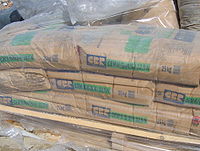
Artificial Neural Network and NLR techniques to predict the rheological properties and compression strength of cement past modified with nanoclay
Sign Up to like & getrecommendations! Published in 2020 at "Ain Shams Engineering Journal"
DOI: 10.1016/j.asej.2020.07.033
Abstract: Abstract One of the most important industries and building operations that cause carbon dioxide emissions is the cement and concrete-related industries that consume about 6 million Btus per metric ton and release about 1 metric… read more here.
Keywords: strength cement; cement; cement paste; modified nanoclay ... See more keywords

Preparation of Ca/Al-Layered Double Hydroxide and the influence of their structure on early strength of cement
Sign Up to like & getrecommendations! Published in 2018 at "Construction and Building Materials"
DOI: 10.1016/j.conbuildmat.2018.06.186
Abstract: Abstract Ca/Al-Layered Double Hydroxide (Ca/Al-LDH), was a kind of important anionic clays with broad applications owing to its properties of exchangeable anion and adjustable particle size. In this study, Ca/Al-LDH had been successfully prepared by… read more here.
Keywords: strength; layered double; double hydroxide; early strength ... See more keywords

Experimental Study Using ASTM and BS Standards and Model Evaluations to Predict the Compressive Strength of the Cement Grouted Sands Modified with Polymer
Sign Up to like & getrecommendations! Published in 2021 at "Case Studies in Construction Materials"
DOI: 10.1016/j.cscm.2021.e00600
Abstract: Abstract The present article discusses the impact of the different grain sizes of sand on the ultimate stress of hand-mixed cement grouted sand modified with polycarboxylate ether-based polymer using two different test standards (ASTM and… read more here.
Keywords: compressive strength; cement grouted; grouted sands; strength cement ... See more keywords

Subsurface Endospore-Forming Bacteria Possess Bio-Sealant Properties
Sign Up to like & getrecommendations! Published in 2018 at "Scientific Reports"
DOI: 10.1038/s41598-018-24730-3
Abstract: Concrete is a strong and fairly inexpensive building substance, but has several disadvantages like cracking that allows corrosion, thus reducing its lifespan. To mitigate these complications, long-lasting microbial self-healing cement is an alternative that is… read more here.
Keywords: subsurface endospore; cement; cement mortar; compressive strength ... See more keywords